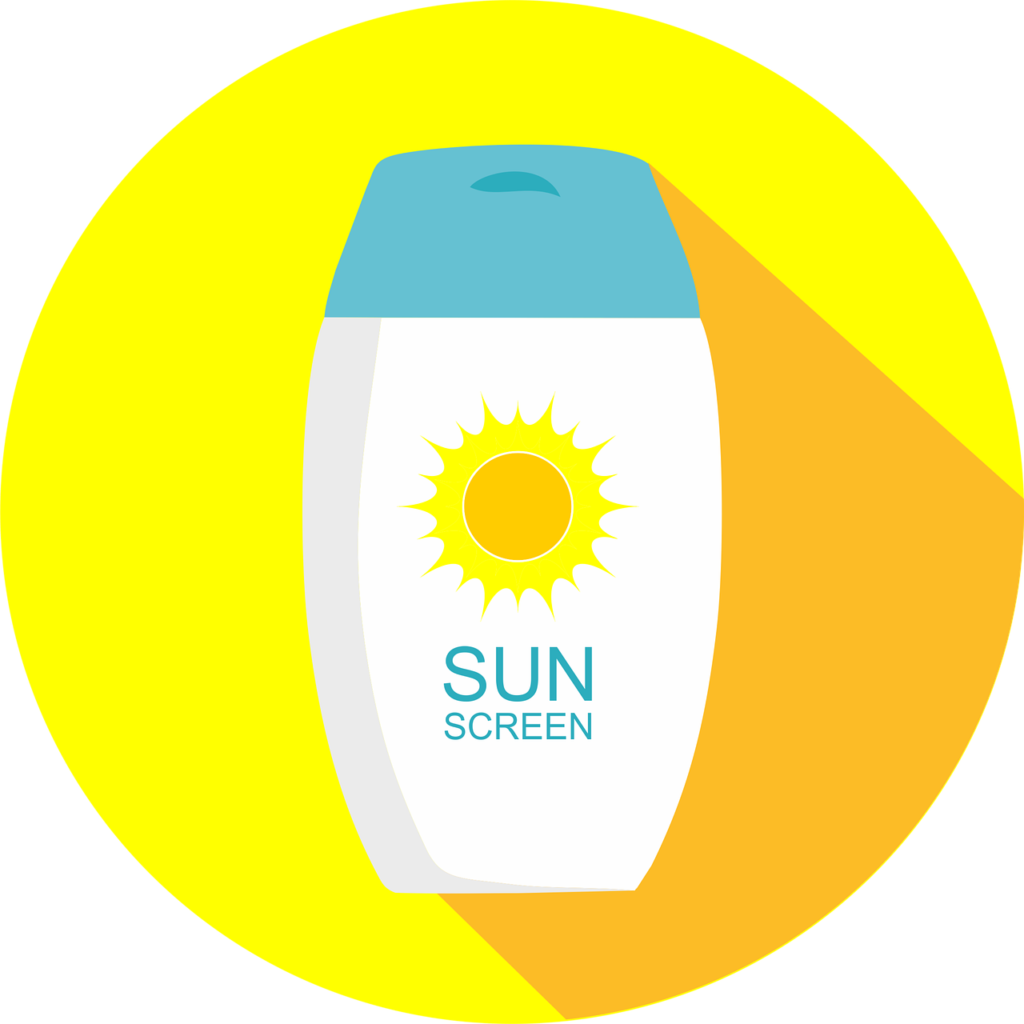Your cart is currently empty!

How Can I Stay Safe From Sunburn At The Beach?
Heading to the beach is always a fantastic idea, but spending long hours under the scorching sun can leave you vulnerable to the dreaded sunburn. So, how can you keep yourself protected from the sun’s harmful rays while soaking up the sand and surf? This article will provide you with essential tips and tricks to ensure a sunburn-free beach day. From wearing the right sunscreen to seeking shade during peak hours, you’ll discover simple yet effective ways to stay safe and enjoy your time under the sun. So grab your hat, sunglasses, and sunblock, and let’s dive into the world of sun protection at the beach!

Choosing the Right Sunscreen
When it comes to staying safe from sunburn at the beach, one of the most important steps you can take is choosing the right sunscreen. Look for a sunscreen with a high sun protection factor (SPF) to ensure maximum protection against harmful UV rays. It is recommended to use a sunscreen with an SPF of 30 or higher.
In addition to a high SPF, make sure to check for broad-spectrum protection. This ensures that the sunscreen protects against both UVA and UVB rays. UVA rays can prematurely age the skin, while UVB rays are primarily responsible for sunburn. By choosing a broad-spectrum sunscreen, you can ensure that your skin is protected from both types of harmful rays.
Water-resistant formulas are another important factor to consider when choosing a sunscreen for the beach. Whether you’re swimming, surfing, or simply enjoying water activities, a water-resistant sunscreen will stay on your skin longer and provide effective protection even when exposed to water. Look for sunscreens that are labeled “water-resistant” and reapply as needed, especially after toweling off.
When applying sunscreen, it’s essential to be generous. Most people don’t apply enough sunscreen, resulting in inadequate protection. Make sure to apply sunscreen to all exposed areas of the body, including the face, neck, arms, and legs. Don’t forget often overlooked areas such as the ears, back of the neck, and the tops of your feet. Applying sunscreen generously will ensure that your skin is adequately protected.
Timing Your Beach Visit
In addition to using sunscreen, it’s crucial to time your beach visit wisely to minimize sun exposure during peak hours. Avoiding the peak hours, typically between 10 am and 4 pm, when the sun’s rays are strongest, will help reduce the risk of sunburn and overexposure to harmful UV rays.
During midday, seek shade whenever possible. The sun’s rays are most intense during this time, and staying directly under the sun increases the risk of sunburn, heat exhaustion, and dehydration. Take advantage of natural sources of shade such as trees or cliffs, or bring your own beach umbrella or canopy to create a shaded area to relax under.
To make the most of your beach outing, plan your activities during the early morning or late afternoon when the sun’s rays are less intense. This way, you can still enjoy the beach while reducing the risk of sunburn and heat-related illnesses.
Covering Up with Protective Clothing
While sunscreen is essential, it’s not the only line of defense against sunburn. Wearing protective clothing helps further protect your skin from harmful UV rays. Here are some tips for covering up with clothing at the beach:
-
Wear wide-brimmed hats to shade your face, ears, and neck. A hat with a brim of at least 2-3 inches provides excellent coverage.
-
Opt for lightweight and light-colored clothing. Dark colors tend to absorb more heat, while light colors reflect the sun’s rays. Loose-fitting garments made from breathable fabrics like cotton are also ideal for hot summer days.
-
Consider wearing beach cover-ups or rash guards, which offer additional sun protection and can be worn over swimsuits. These options have built-in SPF and cover more skin, providing added protection in areas that sunscreen may miss.
-
Protect your eyes by wearing sunglasses with 100% UV protection. Look for sunglasses that block both UVA and UVB rays to shield your eyes from harmful exposure.
By following these clothing guidelines, you can minimize sun exposure and reduce the risk of sunburn during your beach visit.
Applying Sunscreen Correctly
Even with the best sunscreen, it’s crucial to apply it correctly to reap its full benefits. Here are some essential tips for applying sunscreen:
-
Apply sunscreen 15-30 minutes before sun exposure to allow it to absorb into the skin properly. This ensures that your skin is adequately protected as soon as you step into the sun.
-
Don’t forget easily overlooked areas when applying sunscreen. Pay attention to your ears, neck, scalp (if not covered by hair), lips, and the tops of your feet. These areas are often missed but are susceptible to sunburn.
-
Reapply sunscreen every two hours, even if it’s labeled as water-resistant. Over time, sunscreen loses its effectiveness and can be rubbed or washed off. By reapplying regularly, you maintain consistent protection throughout your time at the beach.
-
Whenever you swim or engage in water activities, remember to reapply sunscreen afterward. Even water-resistant formulas can be washed away, so it’s important to reapply to ensure continuous protection.
By following these sunscreen application guidelines, you can effectively protect your skin from harmful UV rays and minimize the risk of sunburn.

Stay Hydrated
Staying hydrated is crucial when spending time at the beach, especially under the hot sun. The combination of sun exposure and physical activity can quickly lead to dehydration if you’re not careful. Here are some tips to keep yourself hydrated:
-
Drink plenty of water throughout the day. It’s important to stay hydrated before, during, and after your time at the beach. Keep a refillable water bottle with you and take regular sips to maintain hydration levels.
-
Avoid excessive consumption of alcohol and caffeinated beverages. These drinks can be dehydrating and may exacerbate the effects of the sun. Opt for water, coconut water, or electrolyte-rich beverages instead.
By prioritizing hydration, you can keep your body cool and reduce the risk of heat-related illnesses while enjoying your time at the beach.
Using Umbrellas and Sun Shelters
Setting up umbrellas or sun tents at the beach can provide much-needed shade and protection from the sun. Here are some tips for using umbrellas and sun shelters effectively:
-
Set up your umbrella or sun tent in a position that blocks direct sunlight. It’s essential to position it to provide the most shade possible, especially during the peak hours when the sun’s rays are strongest.
-
Create a shaded area for breaks from the sun. Having a designated area with shade allows you to take periodic breaks to reapply sunscreen, hydrate, or simply cool off.
By utilizing umbrellas and sun shelters, you can enjoy your time at the beach comfortably while minimizing sun exposure.

Beach Accessories for Extra Protection
In addition to umbrellas and sun shelters, there are various beach accessories available to provide extra protection from the sun. Consider these options for added sun protection:
-
Bring a beach umbrella or canopy with built-in UV protection. These portable shades offer a larger shaded area and are ideal for families or larger groups.
-
Use a portable beach tent for additional shade. Beach tents are lightweight and easy to assemble, providing a private and shaded spot to relax.
-
Consider a beach sunshade or cabana, which offers 360-degree protection from the sun. These larger structures provide ample shade and can accommodate multiple people.
-
Utilize a beach chair with built-in shade. Many beach chairs now come with an attached canopy to provide shade while you relax.
By incorporating these extra protective accessories, you can enhance your sun safety measures and enjoy your beach experience to the fullest.
Protecting Your Feet
While it’s easy to focus on protecting your exposed skin, it’s important not to neglect your feet. Here are some tips for protecting your feet from sunburn and heat:
-
Wear water shoes or sandals that offer both sun and heat protection. These shoes are made from materials that block harmful UV rays and provide insulation against hot sand.
-
Apply sunscreen to your feet, including the tops, soles, and sides. Feet are often forgotten when applying sunscreen, but they are just as susceptible to sunburn. Make sure to cover all areas to reduce the risk of sunburn.
-
Don’t forget to reapply sunscreen on your feet every two hours. As with the rest of your body, it’s important to reapply sunscreen regularly to maintain adequate protection.
By taking care of your feet and keeping them protected, you can avoid discomfort and sunburn while enjoying your time at the beach.

Keep an Eye on the UV Index
Checking the UV index before heading to the beach can provide valuable information about the intensity of the sun’s rays and help you plan your sun safety accordingly. Here’s how to stay informed about the UV index:
-
Check the UV index for your location using websites, smartphone apps, or local weather reports. The UV index is usually on a scale from 1 to 11+, with higher values indicating a greater risk of sunburn and other sun-related issues.
-
Choose lower-risk days to visit the beach when the UV index is low. If possible, plan your beach outing on days when the UV index is 3 or below. This way, you can enjoy the beach with a lower risk of overexposure.
-
Take extra precautions on high UV index days, especially during the peak hours. If you still plan to visit the beach on days with a higher UV index, ensure you follow all sun safety measures, such as using sunscreen, seeking shade, and wearing protective clothing.
By staying aware of the UV index, you can make informed decisions about your sun safety and reduce the risk of sunburn and overexposure to harmful UV rays.
Seeking Shade
While enjoying the sun and the beach is undoubtedly tempting, it’s essential to find shade whenever possible. Here are some tips for seeking shade at the beach:
-
Look for natural sources of shade such as trees, cliffs, or rock formations. These natural features can provide excellent protection from the sun’s rays.
-
Bring a beach umbrella or canopy for portable shade. Folding umbrellas or adjustable canopies can be easily set up to create a shaded area wherever you choose to relax.
-
Select shaded areas under trees or cliffs when positioning your beach gear. By strategically placing your chair or towel in a shaded spot, you can enjoy the beach while minimizing sun exposure.
Remember, seeking shade is an important part of sun safety. By spending some time out of direct sunlight, you can reduce the risk of sunburn and other sun-related risks while still enjoying the beach.